- Home
- A. S. Byatt
The Arabian Nights: Tales from a Thousand and One Nights (Modern Library Classics)
The Arabian Nights: Tales from a Thousand and One Nights (Modern Library Classics) Read online
RICHARD F. BURTON
Richard Francis Burton, the Victorian explorer, linguist, and writer best remembered today for his translation of The Arabian Nights, was born in Torquay, Devon, on March 19, 1821. Descended from prosperous provincial gentry, he experienced an exotic and nomadic childhood. In 1822 Burton’s father, a onetime lieutenant colonel in the British army, moved the family to Beauséjour, a small château in the Loire valley. During the 1830s they wandered throughout France and Italy, returning to England for short visits. As a child Burton displayed his talent for languages, and was fluent in Greek and Latin as well as Italian and French before entering Trinity College, Oxford, in 1840 to prepare for a career in the Anglican church. He was expelled in 1842 for misbehavior and sailed to India with a commission in the Bombay Army, a military branch of the East India Company.
Burton spent the next seven years in the northern province of Sind as a field surveyor and intelligence officer, often disguising himself as a Muslim merchant. He mastered a dozen Oriental languages, including Arabic, Hindustani, and numerous other Indian languages, and absorbed everything he could about Indian culture.
In 1850 he left India for Boulogne, France, where he wrote three books about his experiences in India that endure as compelling contributions to ethnology: Goa, and the Blue Mountains; Scinde, or, The Unhappy Valley; and Sindh, and the Races that Inhabit the Valley of the Indus.
In 1853, disguised as an Afghani physician, he traveled to Medina and Mecca where he visited and sketched at great risk the sacred shrines of Islam forbidden to non-Muslims. Personal Narrative of a Pilgrimage to El-Medinah and Mecca (1855–1856), an encyclopedic look at the Islamic world, is widely considered his most important travelogue.
Though this book brought him acclaim in England, Burton then set off on an expedition through Ethiopia and Somaliland to the forbidden city of Harer, the citadel of Muslim learning; he was the first European to enter and leave the city without being executed. First Footsteps in East Africa (1856) records this adventure. Following a brief tour of duty in the Crimean War, Burton and John Speke set out from Zanzibar in 1857 in an attempt to locate the source of the Nile. The Lake Regions of Central Africa (1860) chronicles the two-year expedition that resulted in the discovery of Lake Tanganyika.
In 1860 he traveled across the United States to Salt Lake City. The City of the Saints (1861) describes the Mormon Church and offers a portrait of its leader, Brigham Young.
In 1861 Burton married Isabel Arundell, a devout Roman Catholic, and joined the British Foreign Office. Assigned to a minor consular post in Fernando Póo, a desolate island off the coast of present-day Cameroon, he studied the ethnology of native tribes and accumulated notes for four books: Wanderings in West Africa (1863), Abeokuta and the Cameroons Mountains (1863), A Mission to Gelele, King of Dahome (1864), and Two Trips to Gorilla Land and the Cataracts of the Congo (1876). While on subsequent diplomatic assignments in São Paulo, Brazil (1864–1869), and Damascus, Syria (1869–1871), he wrote The Highlands of Brazil (1869), Letters from the Battle-fields of Paraguay (1870), and Unexplored Syria (1871).
Burton spent his final years in the quiet consulship at Trieste, Italy. Bored by official duties, he indulged in two final adventures: gold-mining expeditions to Egypt (1876–1880) and West Africa (1881–1882) that resulted in The Gold Mines of Midian (1878) and To the Gold Coast for Gold (1883). During this time he also wrote The Kasîdah (1880), an elegiac poem fashioned after The Rubáiyát of Omar Khayyám. In addition he translated Latin poems by Catullus; several works of Italian literature; and two classics of Indian erotica, the Kama Sutra of Vatsyayana (1883) and the Ananga Ranga (1885); as well as an Arabian treatise on sexuality, The Perfumed Garden of Cheikh Nefzaoui (1886).
In 1884 Burton began to rework and organize his translation of The Arabian Nights, a project undertaken in India some three decades earlier. Published in sixteen volumes over the next three years, it was both a critical and financial success. “The Arabian Nights is more generally loved than Shakespeare,” wrote Robert Louis Stevenson. “No human face or voice greets us among [this] crowd of kings and genies, sorcerers and beggarmen. Adventure, on the most naked terms, furnishes forth the entertainment and is found enough.” In 1886 Burton received a knighthood, an honor many considered long overdue, and two years later he brought out Supplemental Nights, a continuation of his masterpiece.
Captain Sir Richard Burton died in Trieste on October 20, 1890. Alarmed by the sexually explicit content of her husband’s papers, Isabel Burton burned almost all of his notes, diaries, and manuscripts— an immeasurable loss to history. Only a handful of Burton’s works appeared posthumously, notably The Jew, the Gypsy, and El Islam (1898) and Wanderings in Three Continents (1901).
CONTENTS
BIOGRAPHICAL NOTE
INTRODUCTION BY A. S. BYATT
PREFACE BY SIR RICHARD F. BURTON
STORY OF KING SHAHRYAR AND HIS BROTHER
A. The Tale of the Bull and the Ass
(Burton, vol. 1, p. 2)
THE TALES OF SHAHRAZAD
1. THE FISHERMAN AND THE JINNI
A. The Tale of the Ensorcelled Prince
(Burton, vol. 1, p. 38)
2. THE PORTER AND THE THREE LADIES OF BAGHDAD
A. The First Kalandar’s Tale
B. The Second Kalandar’s Tale
C. The Third Kalandar’s Tale
D. The Eldest Lady’s Tale
E. Tale of the Portress
(Burton, vol. 1, p. 82)
3. THE TALE OF THE THREE APPLES
(Burton, vol. 1, p. 186)
4. TALE OF NUR AL-DIN ALI AND HIS SON BADR AL-DIN HASAN
(Burton, vol. 1, p. 195)
5. TALE OF GHANIM BIN AYYUB, THE DISTRAUGHT, THE THRALL O’ LOVE
A. Tale of the First Eunuch, Bukhayt
B. Tale of the Second Eunuch, Kafur
(Burton, vol. 2, p. 45)
6. THE TALE OF THE BIRDS AND BEASTS AND THE CARPENTER
(Burton, vol. 3, p. 114)
7. THE HERMITS
(Burton, vol. 3, p. 125)
8. THE TALE OF KAMAR AL-ZAMAN
(Burton, vol. 3, p. 212)
9. HATIM OF THE TRIBE OF TAYY
(Burton, vol. 4, p. 94)
10. THE TALE OF MA’AN SON OF ZAIDAH AND THE BADAWI
(Burton, vol. 4, p. 97)
11. THE CITY OF MANY-COLUMNED IRAM AND ABDULLAH SON OF ABI KALIBAH
(Burton, vol. 4, p. 113)
12. THE SWEEP AND THE NOBLE LADY
(Burton, vol. 4, p. 125)
13. ALI THE PERSIAN
(Burton, vol. 4, p. 149)
14. THE MAN WHO STOLE THE DISH OF GOLD WHEREIN THE DOG ATE
(Burton, vol. 4, p. 265)
15. THE RUINED MAN WHO BECAME RICH AGAIN THROUGH A DREAM
(Burton, vol. 4, p. 289)
16. THE EBONY HORSE
(Burton, vol. 5, p. 1)
17. HOW ABU HASAN BRAKE WIND
(Burton, vol. 5, p. 135)
18. THE ANGEL OF DEATH WITH THE PROUD KING AND THE DEVOUT MAN
(Burton, vol. 5, p. 246)
19. SINDBAD THE SEAMAN AND SINDBAD THE LANDSMAN
A. The First Voyage of Sindbad Hight the Seaman
B. The Second Voyage of Sindbad the Seaman
C. The Third Voyage of Sindbad the Seaman
D. The Fourth Voyage of Sindbad the Seaman
E. The Fifth Voyage of Sindbad the Seaman
F. The Sixth Voyage of Sindbad the Seaman
G. The Seventh Voyage of Sin
dbad the Seaman
(Burton, vol. 6, p. 1)
20. THE CITY OF BRASS
(Burton, vol. 6, p. 83)
21. THE LADY AND HER FIVE SUITORS
(Burton, vol. 6, p. 172)
22. JUDAR AND HIS BRETHREN
(Burton, vol. 6, p. 213)
23. JULNAR THE SEA-BORN AND HER SON KING BADR BASIM OF PERSIA
(Burton, vol. 7, p. 264)
24. KHALIFAH THE FISHERMAN OF BAGHDAD
(Burton, vol. 8, p. 145)
25. ABU KIR THE DYER AND ABU SIR THE BARBER
(Burton, vol. 9, p. 134)
26. THE SLEEPER AND THE WAKER
A. Story of the Larrikin and the Cook
(Burton, supplemental vol. 1, p. 1)
27. ALAEDDIN; OR, THE WONDERFUL LAMP
(Burton, supplemental vol. 3, p. 52)
28. ALI BABA AND THE FORTY THIEVES
(Burton, supplemental vol. 3, p. 369)
29. MA’ARUF THE COBBLER AND HIS WIFE FATIMAH
(Burton, vol. 10, p. 1)
CONCLUSION
(Burton, vol. 10, p. 54)
NOTES BY SIR RICHARD F. BURTON
COMMENTARY
READING GROUP GUIDE
INTRODUCTION
A. S. Byatt
The collection of stories known as the Thousand and One Nights is in itself a symbol for infinity. The title comes from the Arabic, Alf Layla wa Layla, “a thousand nights and one night” and the addition of the extra “one” to the round thousand both suggests a way to mathematical infinity—you can always add one more to any number—and produces a circular, mirrorlike figure, 1001. The original collection has no one author and no one source. The stories are Indian, Persian, and Arabic, and were told in many forms many centuries before they were written down. In the tenth century a Persian collection, Hazar Afsana (a thousand legends), was known by Arab writers, and tales can be traced back to the Panchatantra (Five Books) in Sanskrit—sixth century or earlier—and the Katha Sarit Sagara, translated and published by C. H. Tawney (1880–1884) and republished in 1928 as The Ocean of Story. As Robert Irwin remarks in his indispensable The Arabian Nights: A Companion, quoting a mediaeval Dutch proverb, “Big fish eat little fish”—story collections tend to swallow, digest, and transmute each other. This image of container and contained in the Nights is also an infinity symbol. A character in a story invokes a character who tells a story about a character who has a story to tell…. Everything proliferates. The Nights is a maze, a web, a network, a river with infinite tributaries, a series of boxes within boxes, a bottomless pool. It turns endlessly on itself, a story about storytelling. And yet we feel it has to do with our essential nature, and not just a need for idle entertainment.
The “frame story,” the tale of the angry king Shahriyar who avenged his first wife’s adultery by marrying virgins and beheading them the morning after their defloration, is a deeply satisfying image of the relations between life, death, and storytelling. The wise Scheherazade saves her own life, and those of the remaining virgins of the kingdom, by telling the king (and her sister Dunyazad) a thousand and one interwoven stories, which are always unfinished at dawn—so deferring the execution daily—and enchanting. Human beings tell stories—in bars, in novels, in courtship, in genealogies—because we are finite biological creatures. We live in biological time, and we have beginnings, middles, and ends. Scheherazade keeps her own life going by telling other lives and deaths—and prolongs it long enough to bear the king three sons and extend both their lifelines into another generation. The Nights contain all sorts of stories, from high magic to coarse humour about farts, from jokes to disasters. Sir Richard Burton, the translator of the present selection, wrote of the magical elements: “Every man at some term or turn of his life has longed for the supernatural powers and a glimpse of Wonderland. Here he is in the midst of it. Here he sees mighty spirits summoned to work the human mite’s will, however whimsical, who can transport him in an eye-twinkling whithersoever he wishes; who can ruin cities and build palaces of gold and silver, gems and jacinths….” Genies are immortal beings, who can break the ineluctable rules of time and space in which humans are trapped. Scheherazade’s story is the human one of birth, sex, and the fear of death. But the genes, like the genies, are potentially immortal, and carry language and the imagination from generation to generation, like the infinitely renewed, metamorphosing life of the Nights. Biology and language make stories.
One of the forms of transmutation and transmission is of course translation. The West met the Arabian Nights in the eighteenth-century French translation of Antoine Galland (1646–1715). It is, as both Irwin and Borges in his wonderful essay on the translators of the Nights point out, Galland who is responsible for the European passion for oriental Tales, and Galland whom everyone read. He worked from a manuscript now in the Bibliothèque Nationale in Paris, which is by chance the oldest extant manuscript. But he introduced tales from many other sources, oral and written, and his versions of such favourites as Aladdin and Ali Baba are the oldest extant versions—Arabic versions turn out to be translations from Galland. There are other powerful translations, both French and English. Edward William Lane’s 1838–41 translation was bowdlerised to suit the sensitivities of nineteenth-century families. John Payne’s 1882–84 version was printed by the Villon Society partly out of fear of prosecution for obscenity. He later worked with Burton. Joseph Charles Mardrus produced a French sixteen-volume translation in 1899 to 1904, admired by Proust and embroidered in the manner of French decadence, which was translated by Powys Mathers in 1923. Mardrus’s French is spirited; his scholarship has been called in question. Husain Haddawy has recently produced a scholarly and elegant translation of parts of the Nights, but the most accessible complete translation remains Burton’s extraordinary translation, eventually running to sixteen volumes with an immense apparatus of extraordinary footnotes, which appeared first in 1885 (the first ten volumes) with the supplementary volumes in 1886 to 1888.
Sir Richard Burton was one of those Victorians whose energy and achievements make any modern man quail. He lived like one of his own heroes, travelling in Goa, Equatorial Africa, Brazil, India, and the Middle East. He took part in the Crimean war. He went with J. H. Speke to find the source of the Nile and discovered Lake Tanganyika. He disguised himself as an Afghan dervish and doctor and went on pilgrimage to the sacred cities of Mecca and Medina—a journey where unmasking would have cost him his life. He wrote books on swordsmanship and geology. According to Borges he dreamed in seventeen languages and spoke thirty-five—other sources say forty. He was an expert in erotica and his learned footnotes cover pederasty, lesbianism in harems, as well as medicine, cookery, law, and many other subjects. This life summary omits much more than it lists. He knew, and half believed, the Middle Eastern superstitious belief that no one can reach the last of the nights without falling dead. His wife, Isabel, tried to bowdlerize the Nights in his lifetime, and—“sorrowfully reverently,” according to herself—burned the manuscript of his erotic legacy, The Scented Garden, after his death.
Burton’s style as a translator has had both admirers and detractors. Robert Irwin claims that its heavy-handedness made him want to slit his throat. He tried to invent an English version of mediaeval Arabic, drawing on Chaucer, Elizabethan English, and Sir Thomas Urquhart’s 1653 translation of the first three books of Rabelais’s Gargantua and Pantagruel. Irwin lists colorful colloquialisms that Burton took over from Urquhart—“Close-buttock game,” “the two-backed beast,” “springal,” “shite-a-bed,” “tosspot,” and “looby.” Burton was a great creator of new words of his own too. In the present selection a good example would be in the “Tale of the Porter and the Three Ladies,” describing the “lady bright of blee, with brow beaming brilliancy, the dream of philosophy, whose eyes were fraught with Babel’s gramarye and her eyebrows were arched as for archery”—which shows his delight in archaisms, alliteration, internal rhyme, and decoration all at once. But his ingenuity is often energet
ic and lively—“the tom-toming of the kettle-drum and tantara of trumpets and clash of cymbals” or the shepherd on page 213 whose flesh “shuddered … with horripilation” at the sight of an angel disguised as a tempting woman. Borges admired Burton—both in his fidelity and in his infidelity to the variegated originals—as he admired Galland and Mardrus, for remaking the Tales, as he put it, in the wake of a literature. (Borges’s italics.) Tales are shape-shifters, self-renewing. Burton combines many readings and many writings, and something of his own fierce dynamism and elaborate intricacy.
Eastern and Western literature contain other related collections of interlinked tales—Ovid’s Metamorphoses, Chaucer’s Canterbury Tales, and Boccaccio’s Decameron, whose frame story has its characters defying the Black Death by retreating to the country and telling tales. A direct descendant of the Nights is The Saragossa Manuscript, written by the Polish Jan Potocki between 1797 and 1815. Potocki was a Knight of Malta, a linguist and an occultist—his tales, set in Spain in 1739, are dizzily interlinked at many levels—ghouls, politics, rationalism, ghosts, necromancy, tale within tale within tale. He spent time searching vainly for a manuscript of the Nights in Morocco, and shot himself with a silver bullet made from a teapot lid in Poland. Out of such works came nineteenth-century Gothick fantasy, and the intricate, paranoid nightmare plottings of such story webs as The Crying of Lot 49 or Lawrence Norfolk’s Lemprière’s Dictionary. Collections of tales talk to each other and borrow from each other, motifs glide from culture to culture, century to century.
——
Scheherazade’s tales have lived on, like germ cells, in many literatures. In British Romantic poetry the Arabian Nights stood for the wonderful against the mundane, the imaginative against the prosaically and reductively rational. Coleridge said his mind had been “habituated to the vast” by his early reading of “Romances, & Relations of Giants & Magicians, & Genii.” He used the tale of the angry and vengeful Djinn whose invisible child had been killed by a thrown date stone, as an example of pure chance or fate. Wordsworth, in the fifth book of the Prelude, describes his childhood treasure, “a little yellow, canvas-covered book, / A slender abstract of the Arabian tales” and the “promise scarcely earthly” of his discovery that there were four large volumes of the work. Dreamers and forgers of lawless tales, he says, confer visionary power. Earlier in Book V he tells of a dream encounter with a strange figure on a dromedary, who seems to be both Don Quixote and “an Arab of the desert too,” who carries a stone and a shell, which are also “both books”—one Euclid’s Elements and the other a prophetic poem. The Arab is saving the “books” from “the fleet waters of a drowning world”—the final Deluge close at hand. Wordsworth has compressed two great collections of tales in a dream pun, an Arabian Knight, saving geometry and poetry from destruction. Again, the Tales stand against death. And Dickens, who became the master of serial narration and endless beginnings, comforted his lonely and miserable childhood with the Arabian Nights, living in their world, and learning their craft.

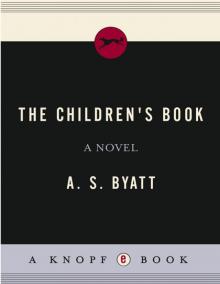 The Children's Book
The Children's Book Babel Tower
Babel Tower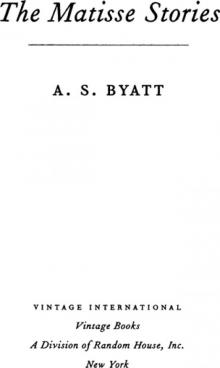 The Matisse Stories
The Matisse Stories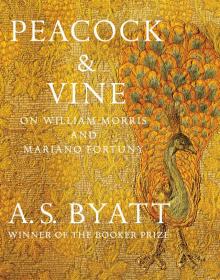 Peacock & Vine: On William Morris and Mariano Fortuny
Peacock & Vine: On William Morris and Mariano Fortuny Elementals: Stories of Fire and Ice
Elementals: Stories of Fire and Ice Sugar and Other Stories
Sugar and Other Stories Possession
Possession Little Black Book of Stories
Little Black Book of Stories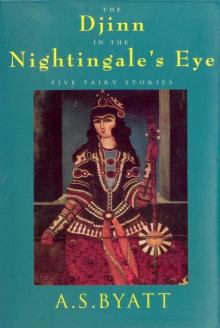 The Djinn in the Nightingale's Eye
The Djinn in the Nightingale's Eye The Virgin in the Garden
The Virgin in the Garden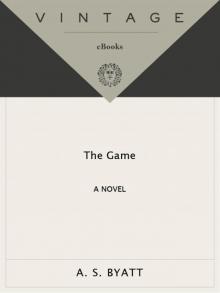 The Game
The Game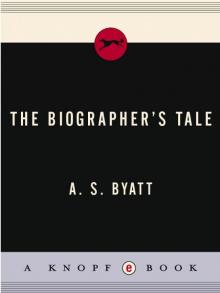 The Biographer's Tale
The Biographer's Tale A Whistling Woman
A Whistling Woman Ragnarok
Ragnarok Angels & Insects: Two Novellas
Angels & Insects: Two Novellas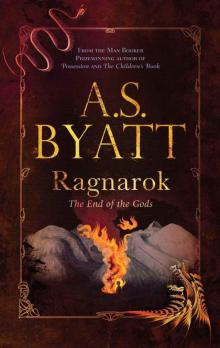 Ragnarok: the End of the Gods (Myths)
Ragnarok: the End of the Gods (Myths) Peacock & Vine
Peacock & Vine The Djinn in the Nightingale's Eye (Vintage International)
The Djinn in the Nightingale's Eye (Vintage International) Angels and Insects
Angels and Insects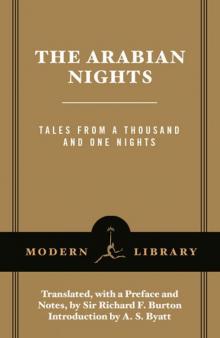 The Arabian Nights: Tales from a Thousand and One Nights (Modern Library Classics)
The Arabian Nights: Tales from a Thousand and One Nights (Modern Library Classics) Elementals
Elementals